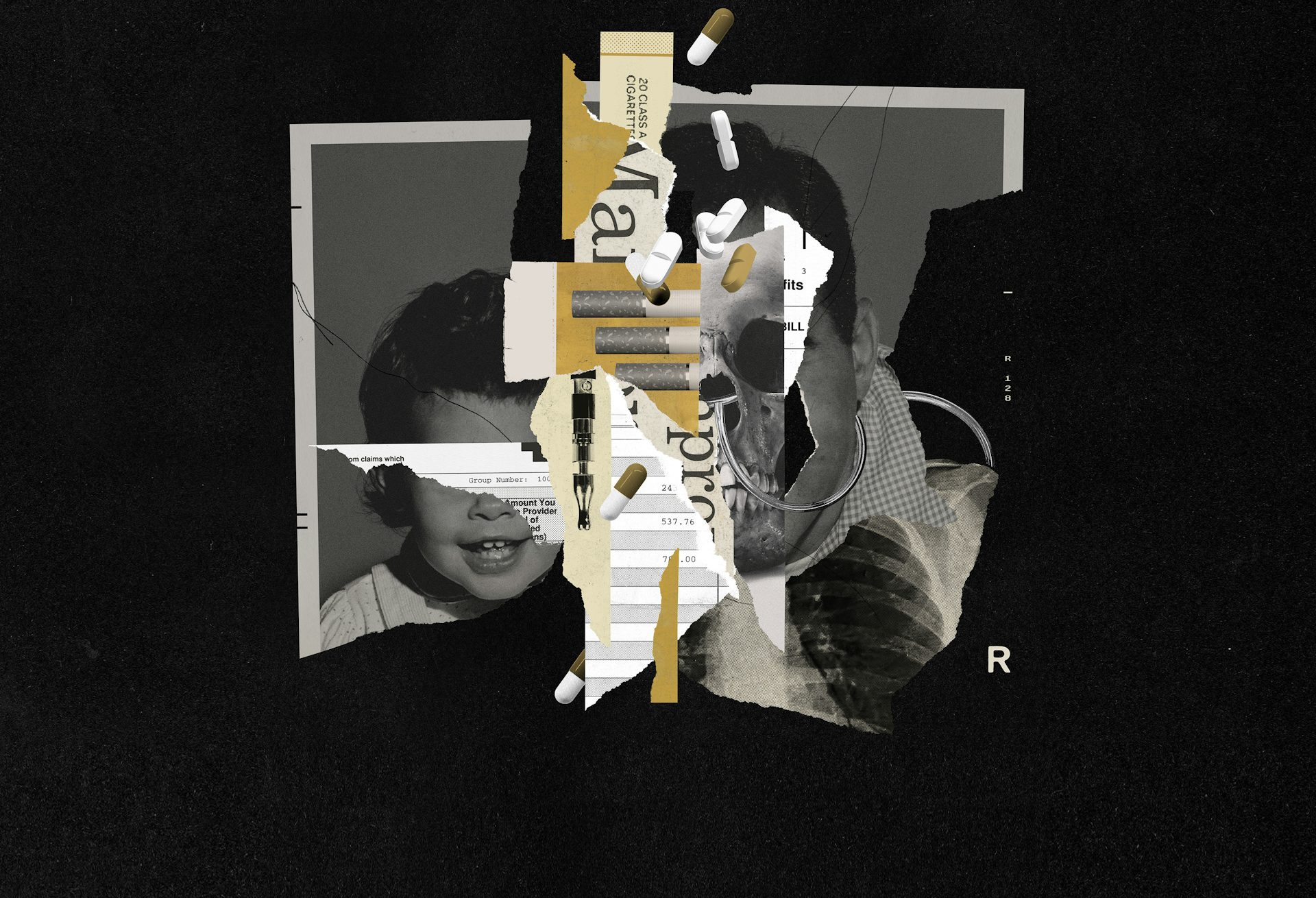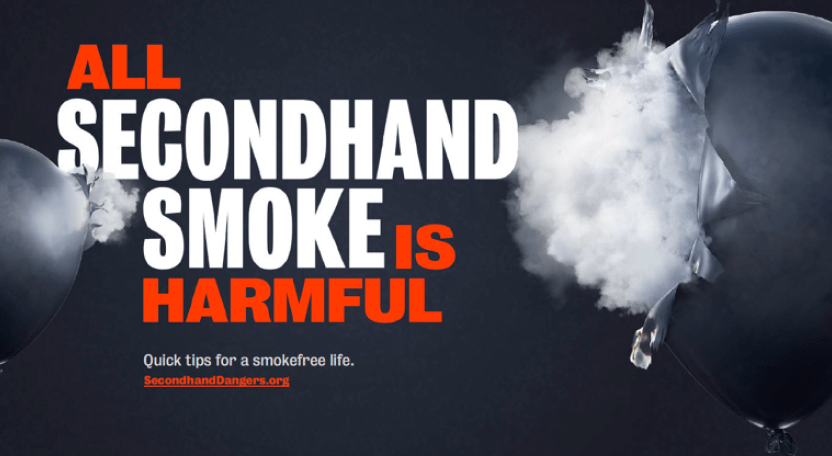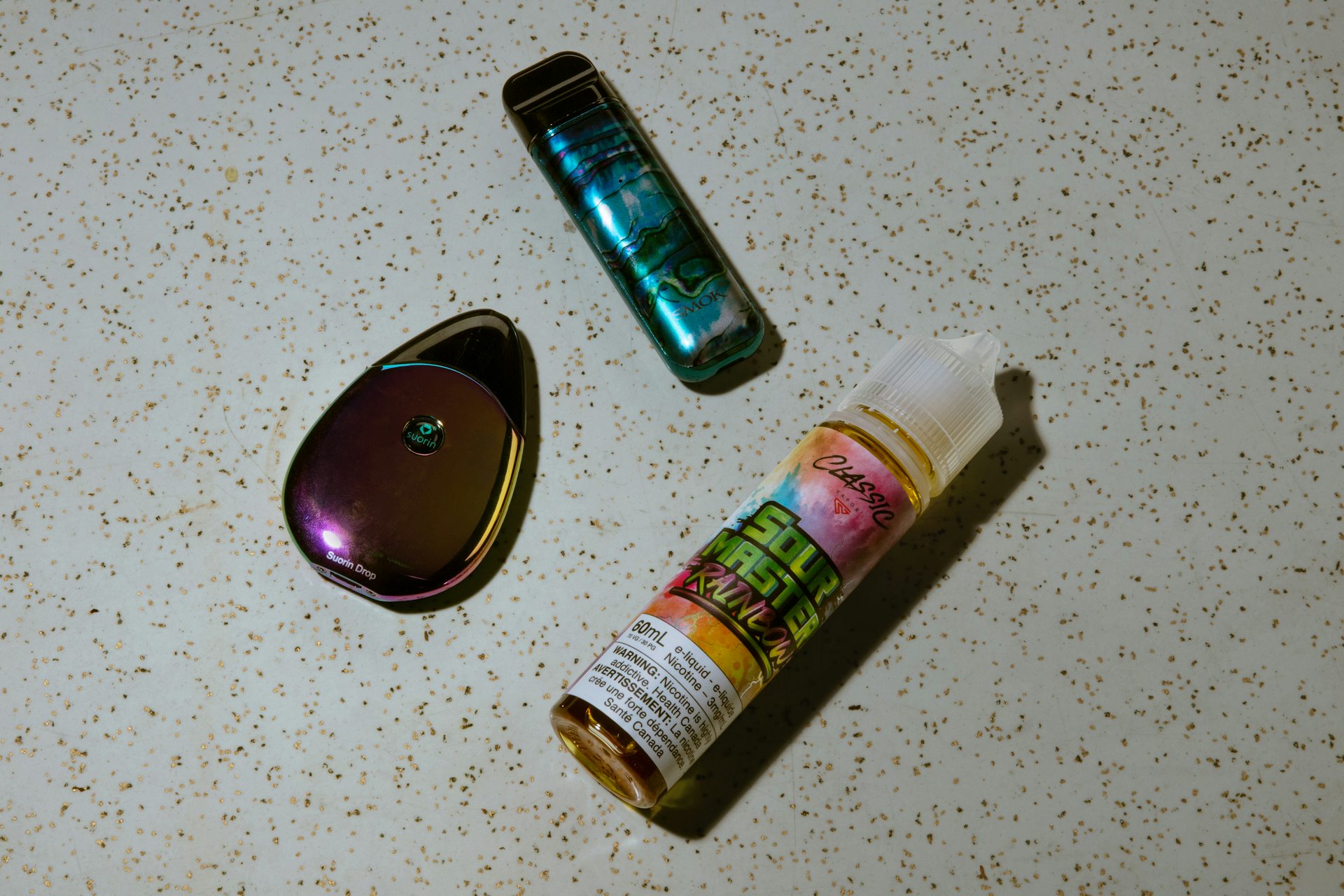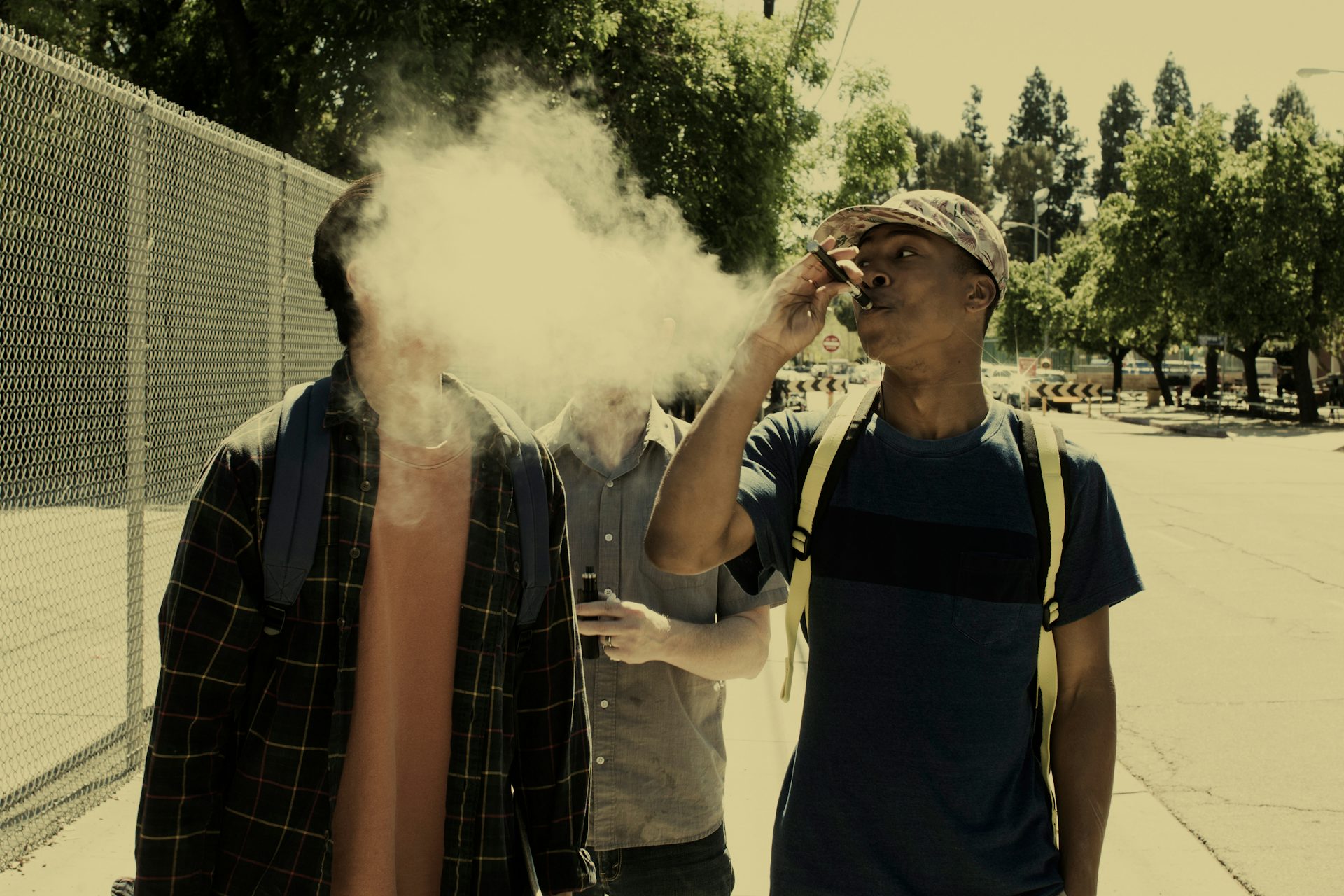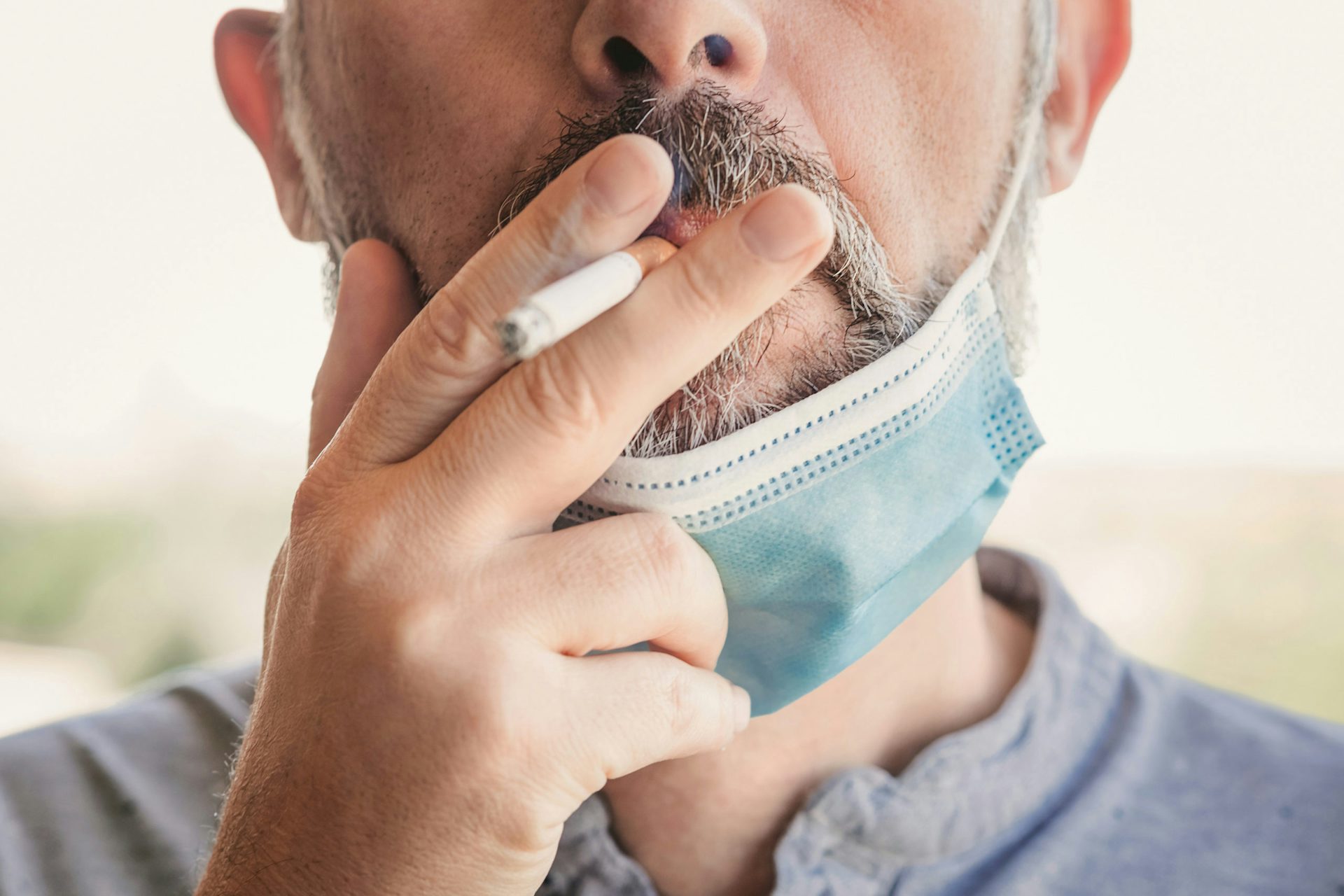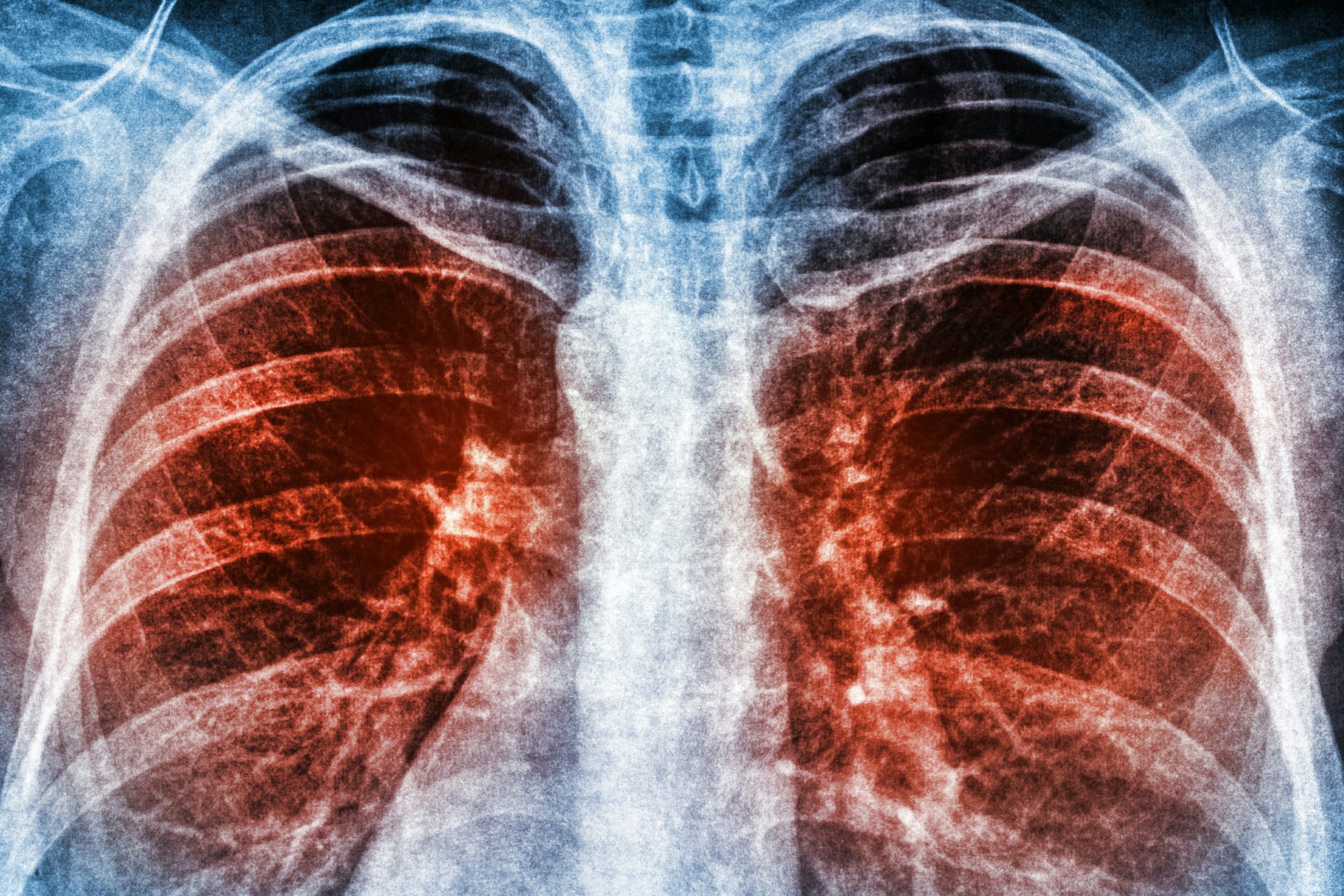IT'S A NIGHTMARE FOR US ALL
Big Tobacco’s Fantasyland
Big Tobacco’s trying to sell us a future without smoking, where vapes are a “safer alternative.”1920 Their deception is dangerous – and deadly.2122
Learn more
ALL SECONDHAND SMOKE IS HARMFUL
Secondhand Dangers
Cigarette smoke and vape aerosol from e-cigarettes contain chemicals that cause cancer and reproductive harm. Exposure to secondhand smoke can happen at work, at home, or even outdoors – which puts everyone at risk for lung cancer and other serious health problems.
Learn more
Read and learn
Explore the tobacco industry’s damage
The tobacco industry currently spends billions each year on slick marketing tactics and political influence so they can profit off death and disease.1617
Learn more
Even for people who don’t use tobacco, there can be deadly consequences.23
Learn more
The industry calls kids their “replacement customers.”24 Big Tobacco sentences them to a lifetime of addiction and disease.
Learn more
This racist and unjust industry has strategically targeted certain communities with deadly products and manipulative messaging.25
Learn more
- Proctor RN. The history of the discovery of the cigarette-lung cancer link: evidentiary traditions, corporate denial, global toll [published correction appears in Tob Control. 2013 Jan;22(1):62]. Tob Control. 2012;21(2):87-91. doi:10.1136/tobaccocontrol-2011-050338.
- Truth Initiative. The 5 ways tobacco companies lied about the dangers of smoking cigarettes. Truthinitiative.org. https://truthinitiative.org/research-resources/tobacco-prevention-efforts/5-ways-tobacco-companies-lied-about-dangers-smoking. Published December 21, 2017. Accessed April 14, 2022.
- Campaign for Tobacco-Free Kids. The toll of tobacco in California. Updated June 13, 2024. Accessed July 1, 2024. https://www.tobaccofreekids.org/problem/toll-us/california
- Centers for Disease Control and Prevention. CDC Archive: Diseases and Death. Updated July 29, 2022. Accessed July 3, 2024. https://archive.cdc.gov/#/details?url=https://www.cdc.gov/tobacco/data_statistics/fact_sheets/fast_facts/diseases-and-death.html
- Friedman LC, Cheyne A, Givelber D, Gottlieb MA, Daynard RA. Tobacco industry use of personal responsibility rhetoric in public relations and litigation: disguising freedom to blame as freedom of choice. Am J Public Health. 2015;105(2):250-260. doi:10.2105/AJPH.2014.302226.
- Centers for Disease Control and Prevention. CDC Archive: Vital Signs: Secondhand smoke. Updated February 3, 2015. Accessed July 3, 2024. https://archive.cdc.gov/#/details?url=https://www.cdc.gov/vitalsigns/tobacco/index.html
- U.S. Department of Health and Human Services. The Health Consequences of Smoking - 50 Years of Progress. A Report of the Surgeon General. Atlanta, GA: U.S. Department of Health and Human Services, Centers for Disease Control and Prevention, National Center for Chronic Disease Prevention and Health Promotion, Office on Smoking and Health; 2014.
- Campaign for Tobacco-Free Kids. Designed for Addiction: How the tobacco industry has made cigarettes more addictive, more attractive to kids and even more deadly. Washington, D.C.: Campaign for Tobacco-Free Kids. June 23, 2014.
- Babb S, Malarcher A, Schauer G, Asman K, Jamal A. Quitting Smoking Among Adults — United States, 2000–2015. MMWR Morb Mortal Wkly Rep 2017;65:1457–1464. DOI: http://dx.doi.org/10.15585/mmwr.mm6552a1.
- Nayak P, Pechacek TF, Slovic P, Eriksen MP. Regretting Ever Starting to Smoke: Results from a 2014 National Survey. Int J Environ Res Public Health. 2017;14(4):390. Published 2017 Apr 6. doi:10.3390/ijerph14040390.
- Centers for Disease Control and Prevention. Why Quitting Smoking Is Hard. CDC.gov. https://www.cdc.gov/tobacco/campaign/tips/quit-smoking/quit-smoking-medications/why-quitting-smoking-is-hard/index.html. Reviewed January 3, 2022. Accessed April 14, 2022.
- American Heart Association News. Why it's so hard to quit smoking. Heart.org. https://www.heart.org/en/news/2018/10/17/why-its-so-hard-to-quit-smoking. Published October 17, 2018. Accessed April 14, 2022.
- RJR; BURROWS DS. STRATEGIC RESEARCH REPORT YOUNG ADULT SMOKERS: STRATEGIES AND OPPORTUNITIES. RJ Reynolds Records; Master Settlement Agreement. 1984 February 29. https://www.industrydocuments.ucsf.edu/docs/ntxb0099.
- Brown JE, Luo W, Isabelle LM, Pankow JF. Candy flavorings in tobacco. N Engl J Med. 2014;370(23):2250-2252. doi:10.1056/NEJMc1403015.
- Jackler RK, Chau C, Getachew BD, Whitcomb MM, Lee-Heidenreich J, Bhatt AM, et al. JUUL Advertising Over its First Three Years on the Market. Stanford, CA: Stanford Research into the Impact of Tobacco Advertising, Stanford University School of Medicine. January 31, 2019.
- Federal Trade Commission. Federal Trade Commission Cigarette Report for 2020. Washington, D.C.: Federal Trade Commission. October, 2021. Accessed July 10, 2024. https://www.ftc.gov/reports/federal-trade-commission-cigarette-report-2020-smokeless-tobacco-report-2020
- Open Secrets. Industry Profile: Tobacco. Summary of 2021. Accessed July 10, 2024. https://www.opensecrets.org/federal-lobbying/industries/summary?cycle=2021&id=A02
- Food and Drug Administration. Results from 2018 National Youth Tobacco Survey show dramatic increase in e-cigarette use among youth over past year. News release. Published November 15, 2018. Accessed June 17, 2024. https://www.fda.gov/news-events/press-announcements/results-2018-national-youth-tobacco-survey-show-dramatic-increase-e-cigarette-use-among-youth-over
- Tobacco Tactics. Newer Nicotine and Tobacco Products. Published July 17, 2023. Accessed September 19, 2023. https://tobaccotactics.org/article/newer-nicotine-and-tobacco-products/#:~:text=Since%20the%20early%202000s%20transnational,)%2C%20snus%20and%20nicotine%20pouches
- Sy, D. Big Tobacco’s Investments in and Acquisitions of Pharmaceutical Companies. ExposeTobacco.org. Updated February 2022. Accessed August 15, 2024. https://exposetobacco.org/wp-content/uploads/STOP-Pharma-Brief-3.15.22.pdf
- Pisinger C, Godtfredsen N, Bender AM. A conflict of interest is strongly associated with tobacco industry–favourable results, indicating no harm of e-cigarettes. Preventive Medicine. 2019;119:124-131. doi:10.1016/j.ypmed.2018.12.011
- American Cancer Society. 10 really bad things the tobacco industry has done - and is doing - to entice kids to start smoking. Updated June 7, 2024. Accessed August 15, 2024. https://www.lung.org/research/sotc/by-the-numbers/10-bad-things-to-entice-kids
- U.S. Department of Health and Human Services. The health consequences of involuntary exposure to tobacco smoke: a report of the surgeon general. Office of Smoking and Health, Centers for Disease Control and Prevention. Published 2006. Accessed July 10, 2024. https://ww2.arb.ca.gov/sites/default/files/classic/research/apr/reports/l4000a.pdf
- UCSF Industry Documents Library. Younger adult smokers: strategies and opportunities. R.J. Reynolds Tobacco Company. Published February 29, 1984. Accessed July 10, 2024. https://www.industrydocuments.ucsf.edu/docs/rkvk0045
- Anderson SJ. Marketing of menthol cigarettes and consumer perceptions: a review of tobacco industry documents. Tob Control. 2011;20 Suppl 2(Suppl_2):ii20-ii28. doi:10.1136/tc.2010.041939.
- Break Free From Plastic. Branded Vol. III Demanding corporate accountability for plastic pollution. Brand Audit 2020. Published 2020. Accessed July 10, 2024. https://brandaudit.breakfreefromplastic.org/wp-content/uploads/2023/01/BFFP-Brand-Audit-Report-2020.pdf.
- Poma A, Vecchiotti G, Colafarina S, et al. In Vitro Genotoxicity of Polystyrene Nanoparticles on the Human Fibroblast Hs27 Cell Line. Nanomaterials (Basel). 2019;9(9):1299. Published 2019 Sep 11. doi:10.3390/nano9091299.
- Zarus GM, Muianga C, Hunter CM, Pappas RS. A review of data for quantifying human exposures to micro and nanoplastics and potential health risks. Sci Total Environ. 2021;756:144010. doi:10.1016/j.scitotenv.2020.144010.
- Jacob H, Besson M, Swarzenski PW, Lecchini D, Metian M. Effects of Virgin Micro- and Nanoplastics on Fish: Trends, Meta-Analysis, and Perspectives. Environ Sci Technol. 2020;54(8):4733-4745. doi:10.1021/acs.est.9b05995.
- Ziv-Gal A, Flaws JA. Evidence for bisphenol A-induced female infertility: a review (2007-2016). Fertil Steril. 2016;106(4):827-856. doi:10.1016/j.fertnstert.2016.06.027.
- Campanale C, Massarelli C, Savino I, Locaputo V, Uricchio VF. A Detailed Review Study on Potential Effects of Microplastics and Additives of Concern on Human Health. Int J Environ Res Public Health. 2020;17(4):1212. Published 2020 Feb 13. doi:10.3390/ijerph17041212.
- Belzagui F, Buscio V, Gutiérrez-Bouzán C, Vilaseca M. Cigarette butts as a microfiber source with a microplastic level of concern. Science of The Total Environment. 2021;762:144165. doi:10.1016/j.scitotenv.2020.144165.
- Governor Newsom Signs Legislation Making California First in the Nation to Ban Toxic Chemicals in Cosmetics [press release]. gov.ca.gov. https://www.gov.ca.gov/2020/09/30/governor-newsom-signs-legislation-making-california-first-in-the-nation-to-ban-toxic-chemicals-in-cosmetics/. Published September 30, 2020. Accessed March 23, 2022.
- Landmark California law bans 'forever chemicals' in products for infants, children [press release]. ewg.org. https://www.ewg.org/news-insights/news-release/2021/10/landmark-california-law-bans-forever-chemicals-products-infants. Published October 5, 2021. Accessed March 23, 2022.
